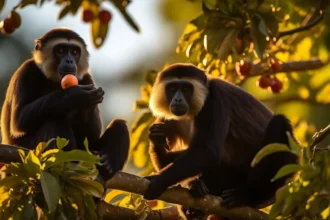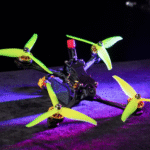The Call of the Himalaya
Sometimes the heart just wants to go somewhere wild, where the air smells like snow and the sky touches mountains. Nepal is like that dream, full of mighty peaks and deep valleys where wind whispers old stories. You walk a few miles and the world changes; people smile, yaks move slowly, and rivers run clear and strong. Every step feels like something magic under your foot. You see mountains; they look like sleeping giants, guarding peace.
Nepal is not just a land of high mountains; it is a land of spirit, adventure, and quiet. From Annapurna to Everest, every trail takes you close to the sky. So today, we go across peaks and valleys, exploring Nepal’s hidden Himalayan wonders—some old, some secret, but all unforgettable.
Annapurna Base Camp Trek: The Dream Trail of Light and Shadow
Ah,Annapurna Base Camp Trek , or as they call it, ABC. One of the most famous treks, but it still feels like a mystery when you go inside the valley. You start from Pokhara, a calm city with a lake, then slowly rise up. Steps go up, the green forest changes to rhododendron hills, then snow mountains appear far away like a painting.
You walk and walk, sometimes tired, sometimes laughing. Villagers greet you with “Namaste,” and kids run with happy faces. The trail passes small tea houses, with hot soup smells in the air. Rain comes sometimes, and fog dances around mountains like veils.
When you reach base camp, 4130 meters high, you feel no word. Just a silent and huge circle of mountains—Annapurna I, Machhapuchhre, and Hiunchuli, all glowing in the sunrise. You forget your phone, forget everything. Just there, heart open.
Many people say the ABC trek is easy, but it’s not just easy; it’s emotional. It teaches patience, strength, and the beauty of small moments. The way snow melts under your shoe, the way stars fall like diamonds. This trek is a poem of a mountain.
The Rugged Challenge: Everest Three Pass Trek
Now we move to the east, to the kingdom of Everest. Everyone knows Everest Base Camp, but few brave souls go for the Everest Three Pass Trek. This one is not simple; it’s tough, wild, and long. But also most rewarding, like secret treasure after hard work.
You cross three high passes—Kongma La, Cho La, and Renjo La. Each one above 5000 meters tests your body and courage. The air is thin, the steps slow, but the view is wide like a dream. You see Lhotse, Ama Dablam, and the great Everest himself shining like the king of the world.
The trail goes from Lukla to Namche Bazaar, then turns towards Gokyo, crosses the glacier, and then joins the EBC route. You pass frozen lakes, cross ridges, and walk under prayer flags waving in the cold wind. Some days the sun shines golden; some days snow hits your face like a needle. But still, my heart wants to go on.
The Three Pass Trek is for those who love both pain and peace. You feel small under the sky but also powerful. You sleep in a small lodge, drink hot tea, and listen to the wind sound like a song of eternity. Every pass crossed is a small victory; every valley below is a gift.
At the end, when you come back to Lukla, you know the mountain has already taken part of your soul. You are not the same person anymore. You are stronger, more quiet, and more alive.
Manaslu Tsum Valley Trek: The Hidden Kingdom of Peace
Far from crowds and far from commercial treks, there is the Manaslu Tsum Valley Trek . This trek is not as well known as Everest or Annapurna, but maybe it is more pure. You start from Arughat or Soti Khola and walk through green forests, stone villages, and deep gorges where rivers roar like thunder.
Manaslu means “Spirit Mountain,” and truly you feel spirit here. The eighth highest mountain in the world, standing proud and gentle. On the way, you meet people who still live simple, old Tibetan culture still alive. Monastery bells ring, monks chant, and children smile shyly.
Then you go to Tsum Valley—oh, that valley! Hidden like a secret garden between high mountains. It opens slowly, with quiet trails and warmhearted people. There is Mu Gompa, an ancient monastery sitting on a hill. From there, you can see the far valley spread like a storybook.
No big hotels here, no noise, just peace and mountain silence. You eat dal bhat, you talk to locals, and you forget the city. The trail climbs Larke La Pass, almost 5100 meters, where the world looks endlessly white and blue. Wind cuts your face but fills your heart with joy.
The Manaslu Tsum Valley Trek is like a meditation walk. It’s wild, raw, and beautiful beyond words. Those who go there never forget.
Nar Phu Valley Trek: The Lost Village Between Ice and Wind
Now, let’s go to the hidden side of the Annapurna region—the Nar Phu Valley Trek. Not many people go here because it’s remote and quiet. But maybe that’s why it is so magical. You start from Koto, near Manang, and enter a deep canyon. Path twists between cliffs, old bridges, and stone gates.
You walk slowly, climb high, and then the valley opens—Nar and Phu villages appear like they are from another world. Stone houses stick to the hill, prayer flags fly above the roof, and the blue sky stretches endlessly. You feel like walking in history.
People here still follow old Tibetan tradition. They herd yaks, grow barley, and live simply. You drink butter tea, talk by the fire, and watch stars at night. No light pollution, only a sky full of stars.
Nar Phu also gives adventure—crossing Kang La Pass at 5320 meters, one of the most stunning viewpoints. From the top, you see Annapurna II, Gangapurna, and Tilicho peaks shining. The air is so cold, but my heart is so warm.
This trek is not luxury, but real. You see raw beauty, you meet kind people, and you live close to nature. Nar Phu Valley is a treasure for travelers who want silence, culture, and mountain truth.
Walking Between Heaven and Earth
All these treks—Annapurna Base Camp, Everest Three Pass, Manaslu Tsum, and Nar Phu—are not just different trails; they are different moods of the Himalaya. Some soft, some wild, some lonely, some full of people. But all connect to one same feeling—freedom.
When you walk in Nepal, you feel heaven under your feet. The clouds move slowly, the river talks, and the wind carries the smell of pine and snow. You meet people who live simple but happy lives. You realize mountains are not just rocks; they are alive.
Walking between heaven and earth makes you understand life again. You stop rushing, and you start seeing. You see how small we are, yet how full of wonder the world is.
The Soul of the Trail
Each trek has a soul. Annapurna’s soul is kindness. People smile, the trail is full of tea houses, and the sunset over Machhapuchhre is like a golden dream.
Everest Three Pass’s soul is courage—wind, ice, and height, but still you move. You face yourself there.
Manaslu’s soul is silence—you walk through forest and monastery, and every step is like prayer.
Nar Phu’s soul is a mystery—lost valley, old tradition, forgotten peace.
In all these souls, you find a piece of your own. Maybe that’s why people keep coming back to Nepal. Not just for the mountain, but for that feeling of being raw, alive, and honest.
Tea Houses, Trails, and Time
One charm of trekking in Nepal is teahouse life. Small wooden lodge, smoky kitchen, owner smiling, hot noodle soup on a cold night. You talk with strangers who become friends. You share stories, laughter, and pain.
Sometimes rain leaks through the roof, sometimes you sleep beside the yak. But it all feels part of the journey. You learn to love simple things—a warm bed, sun on your face, a cup of tea. Time slows down. You stop counting hours; you start living moments.
Every morning a new trail, every evening a new view. That’s the rhythm of a Himalayan walk.
Best Time to Go
Most people go in spring (March–May) or autumn (September–November). These times the skies clear, flowers bloom, and mountains shine bright. But if you like quiet, you can go in winter, though it’s cold and some passes are closed.
Monsoon (June–August) makes the trail wet and leechy, but even then the valley looks green and alive. Each season shows mountains in a different mood.
Preparing for the Adventure
Before you go, prepare well. Good shoes, a warm jacket, a rain cover, and a strong heart. Altitude can be tricky, so walk slowly, drink water, and eat enough. Respect mountains, respect people.
Hiring a guide or porter also helps; they know the trail and culture. They make your journey safe and deeper.
Most important—bring curiosity and patience. Nepal is not a place to rush. It’s a place to feel.
Hidden Stories of Mountain People
When you walk those trails, you see not just mountains but people who live there. Sherpa, Gurung, Tamang, and Manangi—they keep culture alive at high altitude. They smile even when life is hard.
You see old women spinning wool, children studying under prayer flags, and monks playing drums at dawn. Their stories stay with you longer than mountain views.
This is what makes Nepal special—not just geography, but humanity.
A Journey That Never Ends
Even after you come back home, mountains stay in your mind. You see a photo, and suddenly the smell of cold air comes back. You remember footsteps, the sound of snow, laughter in the tea house, and the first sunrise on White Peak.
Nepal always calls again. You say one trek is enough, but next year you plan another. Because the Himalayan journey never truly ends. It becomes part of your life, part of your dream.
Final Word: Across Peaks and Valleys
So this journey across the peaks and valleys of Nepal—from Annapurna to Everest, from Manaslu to Nar Phu—is not only about mountains. It’s about discovering your own depth.
You walk, you climb, you fall, and you rise. You cry sometimes, and you laugh often. But when you look back, you feel proud. Because you went where earth kisses sky, where silence speaks louder than city noise.
Nepal’s hidden Himalayan wonders are not hidden anymore once you open your heart. They live in you forever.
Contact Details
Company address: Everest Trekking Routes Pvt. Ltd.
16 Khumbu, Nayabazaar, Kathmandu, Nepal
Mobile : +977-9843467921 (Rabin)
Email: info@everesttrekkingroutes.com
URL:– www.everesttrekkingroutes.com

















